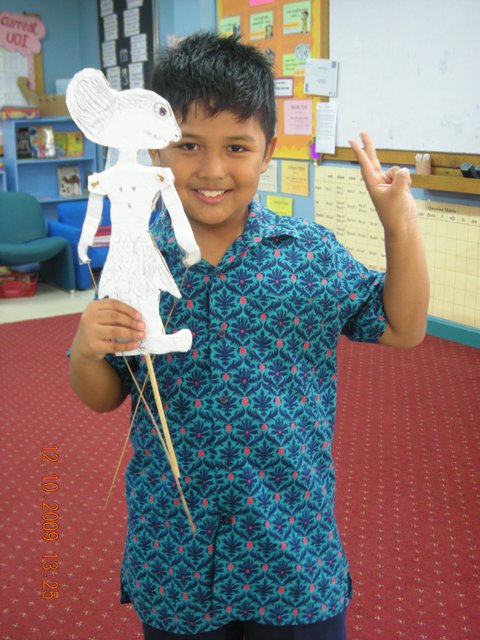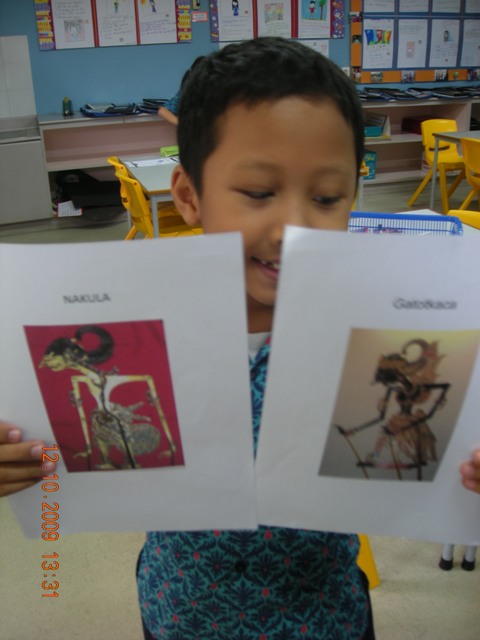Wednesday, October 28, 2009
What Is a "Differentiated" Classroom?
Making It Meaningful
* Mrs. Wiggins assigns students to spelling lists based on a pretest, not the assumption that all 3rd graders should work on List Three.
* Mr. Owen matches homework to student need whenever possible, trying to ensure that practice is meaningful for everyone.
* Ms. Jernigan only occasionally teaches math to the whole class at once. More often, she uses a series of direct instruction, practice, and application groups. She works hard to give everyone "equal time" at an appropriate entry point of instruction, matching practice work to student need. She also regroups students for real-world math applications so they hear a variety of voices in their journey to think mathematically.
* Ms. Enrico offers students a variety of options when it's time to create the final product for a unit. She bases the options on students' interests so they have the chance to link what they've learned with something that matters to them as individuals.
All of these teachers are differentiating instruction. Perhaps they practiced differentiating instruction before it had a name, or without even knowing its name. They are teachers who strive to do whatever it takes to ensure that struggling and advanced learners, students with varied cultural heritages, and children with different background experiences all grow as much as they possibly can each day, each week, and throughout the year.
Hallmarks of Differentiated Classrooms
In differentiated classrooms, teachers begin where students are, not the front of a curriculum guide. They accept and build upon the premise that learners differ in important ways. Thus, they also accept and act on the premise that teachers must be ready to engage students in instruction through different learning modalities, by appealing to differing interests, and by using varied rates of instruction along with varied degrees of complexity. In differentiated classrooms, teachers ensure that a student competes against himself as he grows and develops more than he competes against other students.
In differentiated classrooms, teachers provide specific ways for each individual to learn as deeply as possible and as quickly as possible, without assuming one student's road map for learning is identical to anyone else's. These teachers believe that students should be held to high standards. They work diligently to ensure that struggling, advanced, and in-between students think and work harder than they meant to; achieve more than they thought they could; and come to believe that learning involves effort, risk, and personal triumph. These teachers also work to ensure that each student consistently experiences the reality that success is likely to follow hard work.
Teachers in differentiated classes use time flexibly, call upon a range of instructional strategies, and become partners with their students to see that both what is learned and the learning environment are shaped to the learner. They do not force-fit learners into a standard mold. You might say these teachers are students of their students. They are diagnosticians, prescribing the best possible instruction for their students. These teachers also are artists who use the tools of their craft to address students' needs. They do not reach for standardized, mass-produced instruction assumed to be a good fit for all students because they recognize that students are individuals.}]
Embracing the Individual
Teachers in differentiated classrooms begin with a clear and solid sense of what constitutes powerful curriculum and engaging instruction. Then they ask what it will take to modify that instruction so that each learner comes away with understandings and skills that offer guidance to the next phase of learning. Essentially, teachers in differentiated classrooms accept, embrace, and plan for the fact that learners bring many commonalities to school, but that learners also bring the essential differences that make them individuals. Teachers can allow for this reality in many ways to make classrooms a good fit for each individual...Differentiated classrooms feel right to students who learn in different ways and at different rates and who bring to school different talents and interests. MMore significantly, such classrooms work better for a full range of students than do one-size-fits-all settings. Teachers in differentiated classrooms are more in touch with their students and approach teaching more as an art than as a mechanical exercise.
Excerpted from The Differentiated Classroom: Responding to the Needs of All Learners by Carol Ann Tomlinson. Copyright 1999 by the Association for Supervision and Curriculum Development. All rights reserved.
Carol Ann Tomlinson is associate professor of educational leadership, foundations and policy at The Curry School of Education, University of Virginia.
Concept (Reflection)
to be aware about many aspect of their learning experiences.
Here are some information about "reflection concept from the Making PYP Happen book.
Key question
How do we know?
Definition
The understanding that there are different ways of knowing, and that it
is important to reflect on our conclusions, to consider our methods of
reasoning, and the quality and the reliability of the evidence we have
considered.
Rationale
This concept was selected for a series of interrelated reasons. It challenges
the students to examine their evidence, methods and conclusions. In doing
so, it extends their thinking into the higher order of metacognition, begins
to acquaint them with what it means to know in different disciplines, and
encourages them to be rigorous in examining evidence for potential bias or
other inaccuracy.
Examples of related concepts
Review, interpretation, evidence, responsibility, behaviour.
Few weeks ago as a reflection of our field trip to Fatahillah and Wayang Museums, Year 2 students reflect their learning experienced using 6 thinking hats.
The hats are:
RED HAT (Feelings)
How do I feel about this?
What do I like about the idea?
What don’t I like about this?
WHITE HAT (Information)
What information do I have?
What are the facts?
What information do I need?
What do I want to KNOW?
YELLOW HAT (Benefits)
What are the good points?
Why can this be done?
Why is this a good thing
BLACK HAT (Judgement)
What is wrong with this?
Will this work?
Is it safe?
Can it be done?
GREEN HAT (Creativity)
What new ideas are possible?
What is my suggestion?
Can I create something new?
BLUE HAT (Thinking about thinking)
What thinking is needed?
Where are we now?
What is the next step?
Here are samples of Year 2 students reflection using the 6 thinking hats
Enjoy...
http://www.flickr.com/photos/43517647@N03/4051736049/in/photostream/
http://www.flickr.com/photos/43517647@N03/4051740397/in/photostream/
Monday, October 26, 2009
School Hours
Saat ini penulis sedang mengalami kebingungan yang amat sangat tentang jam belajar paling efektif untuk anak usia 6-8 tahun. Saat ini di GJIS siswa/i kelas 1-2 SD masuk pukul 07.30 dan pulang ke rumah pukul 13.30 lalu siswa/i kelas 3-6 masuk pukul 07.30 dan pulang ke rumah pukul 15.45.
Karena satu hal (yaitu adanya "keberatan" dari "prospective parents" khususnya yang meiliki anak lebih dari 1 di level yang berbeda) akan ada "trial" tentang jam pelajaran kelas 1-2 yang akan diperpanjang sama seperti kelas 3-6. Apakah hal ini cukup bijaksana untuk dilakukan? Melihat bagaimana siswa dan guru sama-sama berusaha keras agar proses belajar dan mengajar berjalan dengan baik dan efektif.
Karena pengetahuan saya yang terbatas mengenai hal ini semoga pembaca sekalian dapat memberi masukan/pendapat tentang "berapa lama sih waktu efektif seorang siswa berusia 6-8 tahun belajar di sekolah?"
Oh iya sebagai seorang anak mereka tentu saja juga membutuhkan waktu untuk relaxasi, yaitu menjadi seimbang antara kehidupan belajar formal di sekolah dan belajar non formal di luar sekolah.
Wednesday, October 21, 2009
Top 100 Web Tools for Educators 2009
I knew this information from russeltarr
it is very useful for us educators to learn and try these web tools to be use in our classroom
as always "life long learner"
enjoy :)
http://classtools.net/twitter/tweet.htm?url=http://c4lpt.co.uk/recommended/index.html&message=Top%2520100%2520Web%2520Tools%2520for%2520Educators%25202009
Communication Skills
Salah satu "skills" yang diharapkan dimiliki oleh siswa/i GJIS adalah ketrampilan siswa dalam berkomunikasi.
Keterampilan berkomunikasi ini mencakup:
- mendengarkan (mendengarkan instruksi, mendengarkan orang lain, dan mendengarkan informasi)
- berbicara (berbicara dengan jelas, memberikan laporan secara lisan, mengekspresikan ide dengan jelas dan logis, mengeluarkan pendapat)
- membaca (membaca berbagai sumber untuk informasi dan hiburan, memahami apa yang dibaca, menggambarkan kesimpulan)
- menulis (mencatat informasi dan pengamatan, menulis laporan, menulis jurnal)
- melihat (menginterpretasi dan menganalisa multimedia)
- presentasi (mengkomunikasikan informasi dan ide menggunakan berbagai jenis media visual)
- komunikasi non verbal (mengenali dan mampu membuat simbol dan dapat menginterpretasikan simbol tersebut)
Berikut adalah contoh kemampuan berbicara salah seorang siswa kelas 2 SD di GJIS.
http://s789.photobucket.com/albums/yy178/purviantyka/?action=view¤t=priscilla.flv
Student's Action
Sebagai seorang pendidik, saya peribadi sangat bangga saat ada siswa/i saya yang mampu mengaplikasikan/mengembangkan ilmu yang ia dapat di sekolah. Pagi ini terasa lebih spesial karena salah seorang siswa kelas 2A GJIS yaitu Andersen Wisnawa dengan bangga menunjukkan film singkat yang dia buat bersama kakaknya di rumah.
Andersen terinspirasi membuat film ini karena 2 minggu yang lalu kami "field trip" ke Museum Wayang (berkenaan dengan unit yang sedang kami pelajari sekarang yaitu Artifak) dan ia merasa kagum akan keindahan dan keanekaragaman wayang Indonesia. Selain Andersen ada juga siswa Mario A. dan Mario D. yang melakukan aksi dengan cara membuat wayang sederhana dan mencari tahu di internet 2 jenis wayang yang ia sukai yaitu Gatotkaca danNakula. Semoga semakin banyak siswa/i yang dapat melakukan AKSI sebagai respon atas pengalaman belajar yang ia miliki.
Selamat menikmati film singkat karya Andersen berikut ini :D (wah ternyata videonya terlalu besar, harus di resize dulu. Video menyusul yah :)
Thank you for sharing Mario A. + Mario D. + Andersen...
We are very proud of you :D

- Mario A.

- Mario D.
Pemula
Akhirnya saya memutuskan untuk memindahkan blog pengalaman belajar mengajar saya ke blogger.com :D
Semoga tulisan-tulisan ini dapat memberikan manfaat bagi kita semua yang membacanya....
Maju terus dunia pendidikan....
Salam hangat
Purviantyka Limbong